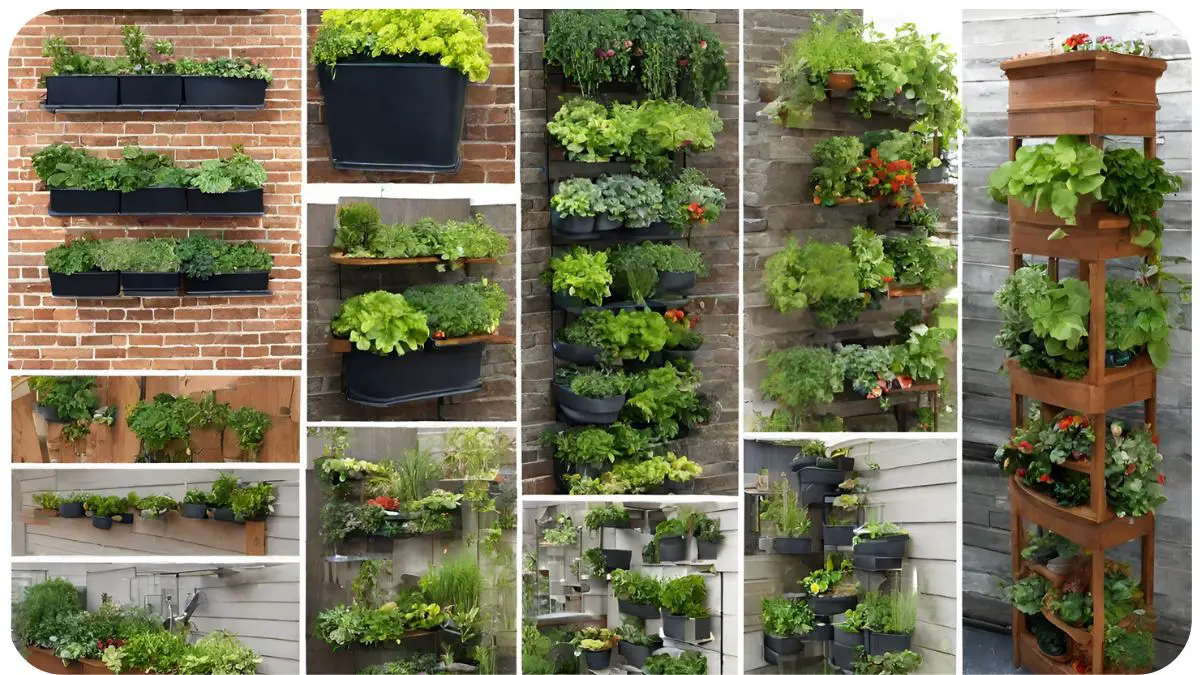In the quest for greener living spaces, urban gardeners and plant enthusiasts are constantly seeking innovative ways to cultivate greenery in limited spaces. Tower and wall gardens have emerged as ingenious solutions, allowing individuals to maximize vertical space while adding a touch of nature to their surroundings.
In this article, we’ll explore the benefits of these vertical gardening techniques, provide practical tips for getting started, and share insights on maintenance and troubleshooting.
| Takeaways |
|---|
| Vertical gardens maximize space and enhance aesthetics. |
| Vertical gardening techniques offer solutions for small spaces and urban environments. |
| Regular maintenance, including watering, fertilizing, and pruning, is crucial for the success of vertical gardens. |
| Address common issues such as pests, diseases, and nutrient deficiencies promptly to ensure the health of your vertical garden. |
| Explore different types of vertical gardens and find the one that best fits your space and needs. |
Benefits of Tower and Wall Gardens
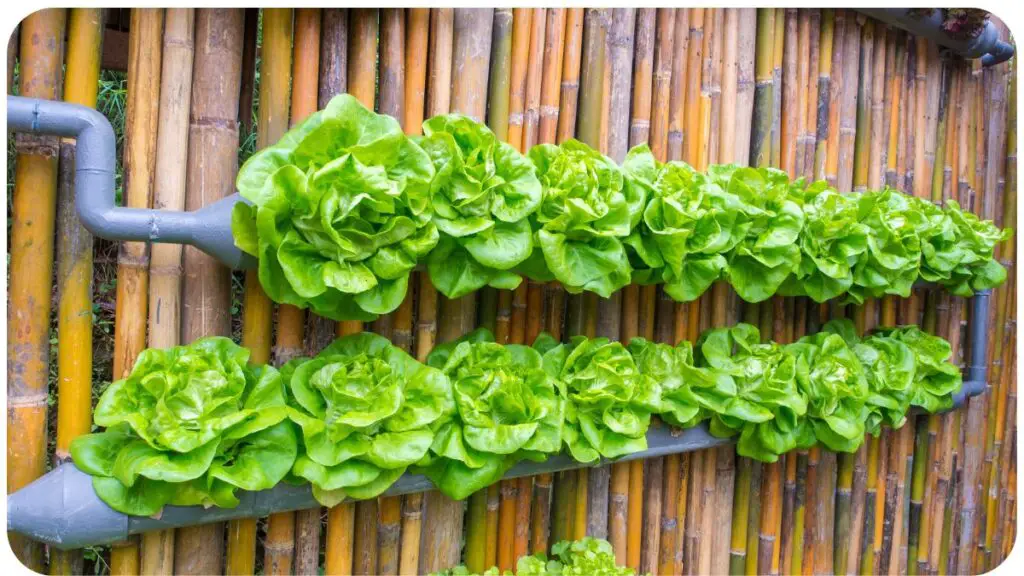
Vertical gardens offer a myriad of advantages, making them an attractive option for both novice and experienced gardeners alike. Here are some key benefits:
Repurpose household items into creative planters to infuse charm and functionality into your garden space. Discover how to maximize your gardening potential with inventive solutions that breathe new life into everyday objects.
| Benefits |
|---|
| Maximizes Space |
| Enhances Aesthetics |
| Improves Air Quality |
| Increases Accessibility |
| Reduces Pest Problems |
These gardens not only beautify your living environment but also contribute to better air quality by absorbing pollutants and releasing oxygen. Additionally, their compact nature makes gardening accessible to individuals with limited outdoor space, such as apartment dwellers or those living in urban areas.
Getting Started
Before diving into the world of tower and wall gardens, it’s essential to lay the groundwork for success. Here are some key considerations to keep in mind:
Choosing the Right Plants
Selecting suitable plants is crucial for the success of your vertical garden. Opt for species that thrive in your local climate and are well-suited to vertical growth. Some excellent choices for tower and wall gardens include herbs like basil and thyme, leafy greens such as lettuce and spinach, and compact fruiting plants like cherry tomatoes and strawberries.
Selecting Containers
When it comes to containers for your vertical garden, the options are endless. From traditional pots and planters to specialized vertical gardening systems, choose containers that are durable, lightweight, and provide adequate drainage. Consider the size and shape of your containers to ensure they fit seamlessly into your vertical setup.
Achieve a lush garden oasis affordably with smart hacks that optimize space and resources. Explore budget-friendly techniques to enhance your outdoor sanctuary without compromising on beauty or sustainability.
Building Your Tower Garden
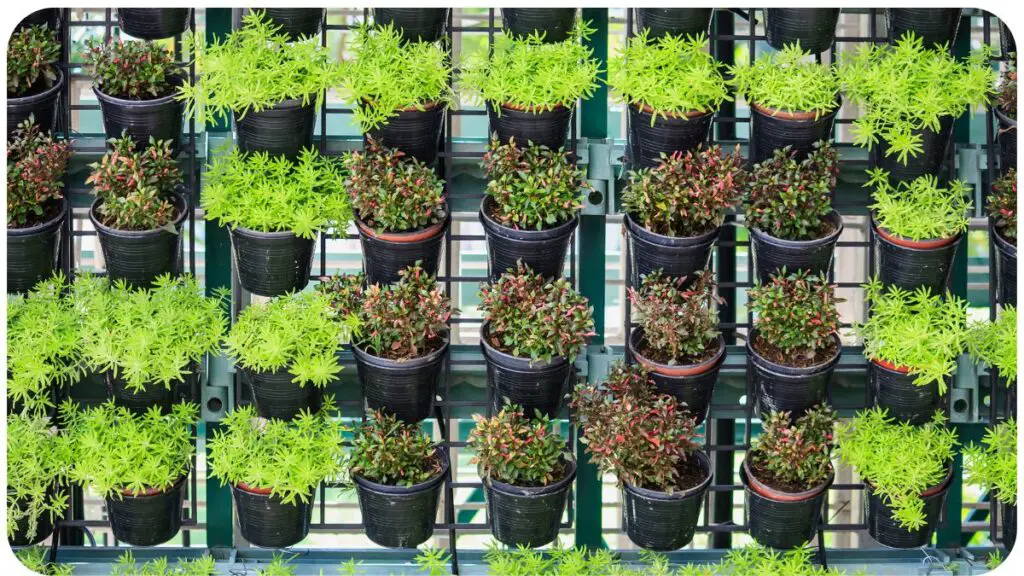
Tower gardens are versatile vertical gardening systems that allow you to grow a wide variety of plants in a compact space. Here’s how to build your own tower garden:
Materials Needed
Before getting started, gather the following materials:
- PVC pipes or stacked planters
- Potting mix
- Seedlings or seeds
- Watering system (optional)
Step-by-Step Guide
- Assemble your tower garden structure using PVC pipes or stacked planters. Ensure that the system is stable and secure.
- Fill each planting pocket with potting mix, leaving enough space for the roots of your chosen plants.
- Plant your seedlings or seeds in the prepared pockets, following spacing recommendations for each species.
- If desired, install a watering system to ensure consistent moisture levels throughout the tower.
Once your tower garden is set up, regularly monitor the moisture levels and adjust watering as needed to keep your plants happy and healthy.
Craft a haven for pollinators in your backyard with strategic landscaping practices. Learn how to attract and support vital insects while beautifying your outdoor space with plants that promote biodiversity and ecological balance.”
Setting Up a Wall Garden
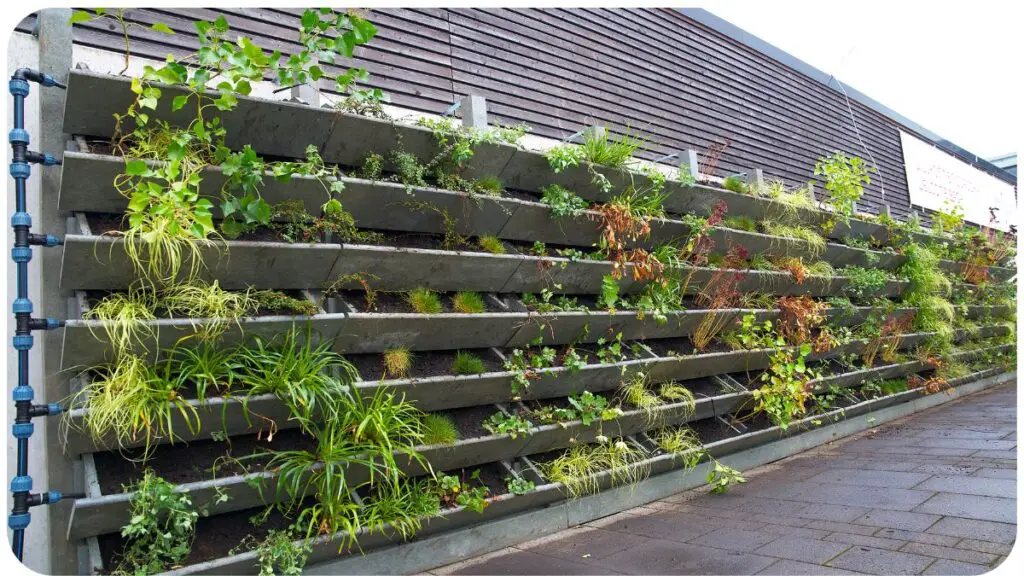
Wall gardens, also known as vertical green walls, are excellent for adding a touch of greenery to indoor and outdoor spaces. Here’s how to set up your own wall garden:
Equipment Required
To create a wall garden, you’ll need the following equipment:
- Vertical gardening panels or frames
- Geotextile fabric or felt
- Potting mix
- Plants or seedlings
- Irrigation system (optional)
Installation Process
- Attach the vertical gardening panels or frames to the desired wall using screws or mounting brackets.
- Line the panels with geotextile fabric or felt to create pockets for planting.
- Fill each pocket with potting mix, leaving enough space for plant roots.
- Plant your chosen plants or seedlings in the prepared pockets, ensuring proper spacing between each.
- If using an irrigation system, install it according to the manufacturer’s instructions to ensure adequate watering for your wall garden.
With proper installation and care, your wall garden will flourish, transforming any vertical surface into a vibrant oasis of greenery.
Maintenance Tips
Maintaining your tower and wall gardens is essential for ensuring the health and vitality of your plants. Here are some key maintenance tips to keep your vertical garden thriving:
Elevate your garden design with unique plant varieties that add drama and personality to your landscape. Discover extraordinary botanical selections that capture attention and transform your garden into a captivating visual spectacle.
Watering
Monitor the moisture levels of your tower and wall gardens regularly, especially during hot and dry periods. Ensure that your plants receive adequate water without becoming waterlogged. Consider installing a drip irrigation system or using self-watering containers to maintain consistent moisture levels.
Fertilizing
Provide your plants with the nutrients they need to thrive by fertilizing them regularly. Use a balanced fertilizer formulated specifically for container gardening, and follow the manufacturer’s recommendations for application rates and frequency. Avoid over-fertilizing, as this can lead to nutrient imbalances and damage to your plants.
Pruning
Keep your tower and wall gardens neat and tidy by regularly pruning your plants. Remove any dead or yellowing leaves, as well as any stems or branches that are overcrowding the space. Pruning encourages healthy growth and helps prevent the spread of pests and diseases.
Troubleshooting Common Issues
Despite your best efforts, you may encounter some common issues with your tower and wall gardens. Here’s how to address them:
Pests and Diseases
Keep an eye out for signs of pests such as aphids, whiteflies, and spider mites, as well as common diseases like powdery mildew and leaf spot. Use organic pest control methods such as neem oil or insecticidal soap to manage pest infestations, and promptly remove any affected plant material to prevent the spread of disease.
Nutrient Deficiencies
Monitor your plants for signs of nutrient deficiencies, such as yellowing leaves or stunted growth. Address nutrient deficiencies by adjusting your fertilization routine or supplementing with additional nutrients as needed. Conduct soil tests periodically to ensure that your plants have access to the essential nutrients they need for healthy growth.
By staying proactive and addressing issues promptly, you can keep your tower and wall gardens healthy and thriving year-round.
Embark on a journey of balcony gardening success with this comprehensive guide. Explore tips and techniques for growing a thriving vegetable garden in limited space, bringing fresh produce and greenery to your urban dwelling.
Maximizing Space Indoors
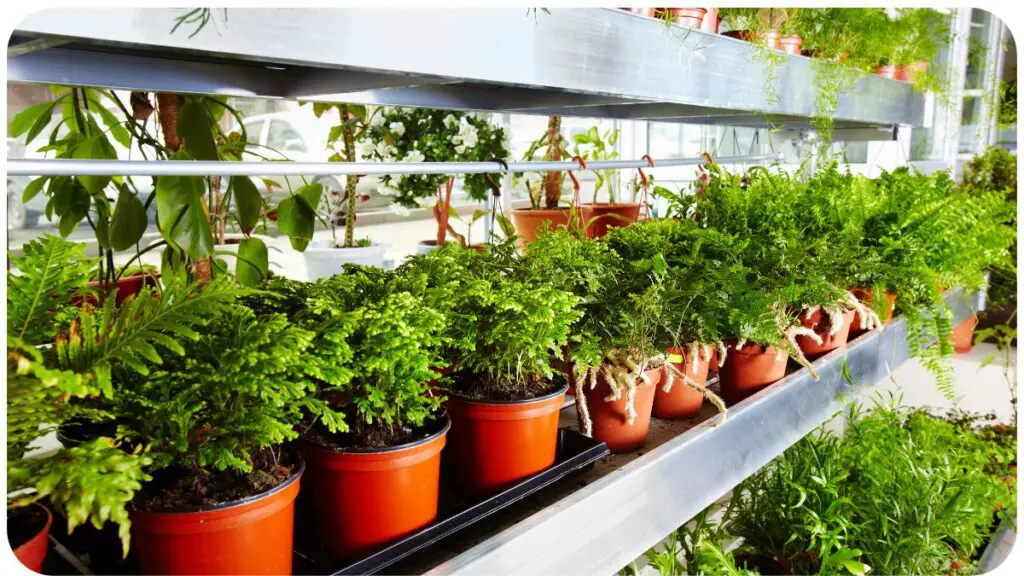
Vertical gardening isn’t just for outdoor spaces – it’s also an excellent way to maximize space indoors. Here are some tips for creating a thriving indoor vertical garden:
Vertical Farming Techniques
Experiment with vertical farming techniques such as hydroponics or aeroponics to grow a wide variety of plants indoors. These soil-less growing methods use water-based nutrient solutions to deliver essential nutrients directly to plant roots, maximizing space and efficiency.
Indoor Lighting Solutions
Provide your indoor vertical garden with adequate lighting by using full-spectrum grow lights. Position the lights above your plants to mimic natural sunlight and ensure healthy growth. Consider using timers to regulate the light cycle and provide your plants with consistent lighting conditions year-round.
By harnessing the power of vertical gardening techniques, you can transform even the smallest indoor space into a lush oasis of greenery.
Real-Life Success Stories
To inspire and motivate readers, share real-life success stories of individuals or communities who have successfully implemented tower and wall gardens in their spaces. Highlight the challenges they faced, the solutions they implemented, and the benefits they’ve experienced as a result of their vertical gardening endeavors.
For example, you could share the story of a city apartment dweller who transformed their balcony into a thriving vertical garden oasis, or a school that incorporated tower gardens into its curriculum to teach students about sustainable agriculture.
By showcasing these success stories, you can demonstrate the tangible benefits of tower and wall gardens and inspire others to embark on their own vertical gardening journey.
Conclusion
In conclusion, tower and wall gardens offer a practical and innovative solution for maximizing space and bringing greenery into any environment. By following the tips and techniques outlined in this article, you can create a thriving vertical garden that enhances the aesthetics of your space, improves air quality, and provides a bountiful harvest of fresh produce.
Whether you’re a seasoned gardener or a novice plant enthusiast, vertical gardening opens up a world of possibilities for creating beautiful and sustainable green spaces. So why wait? Get started on your vertical gardening journey today and reap the rewards for years to come.
Further Reading
- Types of Vertical Gardens: Explore different types of vertical gardens and discover which one suits your space and needs best.
- Space-Saving Vertical Gardens: Learn creative DIY solutions for maximizing space with vertical gardens, perfect for small gardens and urban environments.
- Vertical Gardening: A Blooming Trend in Urban Gardening: Dive into the growing trend of vertical gardening and discover how it’s revolutionizing urban green spaces.
FAQs
What are the benefits of vertical gardening?
Vertical gardening maximizes space, enhances aesthetics, improves air quality, increases accessibility, and reduces pest problems.
What types of plants are suitable for vertical gardens?
Herbs like basil and thyme, leafy greens such as lettuce and spinach, and compact fruiting plants like cherry tomatoes and strawberries thrive in vertical gardening environments.
How do I build a tower garden?
To build a tower garden, you’ll need PVC pipes or stacked planters, potting mix, seedlings or seeds, and optionally, a watering system. Follow a step-by-step guide for assembly and planting.
What maintenance is required for vertical gardens?
Regular watering, fertilizing, and pruning are essential for maintaining vertical gardens. Monitor moisture levels, provide nutrients, and keep plants tidy to ensure their health and vitality.
How can I troubleshoot common issues with vertical gardens?
Address pests, diseases, and nutrient deficiencies promptly by using organic pest control methods, removing affected plant material, and adjusting fertilization routines as needed. Conduct soil tests to diagnose nutrient deficiencies accurately.

For 15 years, Hellen James has worked in the gardening industry as an expert and landscape designer. During her career, she has worked for a variety of businesses that specialize in landscaping and gardening from small firms to large corporations.

